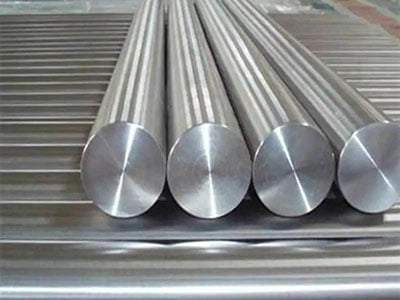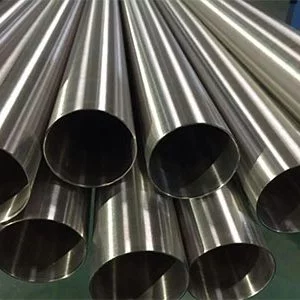Introduction
Understanding the stainless steel melting point is crucial for industries relying on its unique properties. This comprehensive guide delves into the science behind the melting point of stainless steel, exploring the factors that influence it, and its implications for various applications. Whether you are an engineer, a student, or simply interested in materials science, this article aims to provide valuable insights into this fascinating topic.
What is the Stainless Steel Melting Point?

The melting point of stainless steel refers to the temperature at which the solid phase transitions to a liquid phase. This property is essential for manufacturing and processing stainless steel, as it influences how the material can be shaped, joined, and utilized in different applications.
Stainless steel is an alloy primarily composed of iron, chromium, and nickel, with the addition of other elements such as molybdenum, manganese, and carbon. The specific melting point of stainless steel varies depending on its composition, typically ranging from 1400°C to 1450°C (2550°F to 2640°F).
Factors Influencing the Melting Point
Composition of the Alloy
The melting point of stainless steel is primarily determined by its composition. Different grades of stainless steel have varying proportions of iron, chromium, nickel, and other alloying elements, each affecting the melting temperature. For example, higher chromium and nickel content generally increase the melting point.
Phase Diagrams
Phase diagrams are graphical representations showing the stability of different phases of an alloy at various temperatures and compositions. They are crucial tools for understanding the melting behavior of stainless steel. The iron-chromium-nickel phase diagram is particularly relevant for stainless steel alloys, illustrating how different compositions affect the melting point.
Impurities and Additives
Impurities and additional alloying elements can significantly influence the melting point of stainless steel. Elements like sulfur and phosphorus, even in small amounts, can lower the melting point, while elements like molybdenum and tungsten can increase it.
Heat Treatment and Processing
Heat treatment processes such as annealing and quenching can alter the microstructure of stainless steel, impacting its melting point. The history of thermal processing can affect the distribution of alloying elements and the formation of phases within the steel, thereby influencing its melting behavior.
Table of Common Stainless Steel Grades and Their Melting Points
To better understand how different compositions affect the melting point, let’s examine some common stainless steel grades and their melting points.
| Stainless Steel Grade | Composition (Major Elements) | Melting Point (°C) | Melting Point (°F) |
|---|---|---|---|
| 304 | Fe, 18-20% Cr, 8-10.5% Ni | 1400 – 1450 | 2550 – 2640 |
| 316 | Fe, 16-18% Cr, 10-14% Ni, 2-3% Mo | 1375 – 1400 | 2500 – 2550 |
| 430 | Fe, 16-18% Cr | 1425 – 1510 | 2600 – 2750 |
| 2205 | Fe, 21-23% Cr, 4.5-6.5% Ni, 2.5-3.5% Mo | 1350 – 1400 | 2460 – 2550 |
This table highlights the variation in melting points due to different alloy compositions, underscoring the importance of selecting the right grade for specific applications.
Applications and Implications

Manufacturing and Fabrication
Understanding the melting point of stainless steel is essential for manufacturing processes such as casting, welding, and forging. Knowing the precise melting point allows engineers to select appropriate methods and temperatures for shaping and joining stainless steel components.
Heat Resistance and Performance
The high melting point of stainless steel makes it suitable for applications requiring heat resistance. For instance, stainless steel is widely used in the aerospace, automotive, and energy industries, where materials are exposed to extreme temperatures and demanding conditions.
Corrosion Resistance
While the melting point is a critical factor, it is also important to consider the overall performance of stainless steel in various environments. The alloy’s composition not only affects its melting point but also its corrosion resistance, which is crucial for applications in harsh or corrosive environments such as chemical processing plants and marine structures.
Cost and Material Selection
Selecting the appropriate grade of stainless steel involves balancing the melting point with other factors such as cost, mechanical properties, and environmental resistance. Higher melting point alloys may offer better performance but can also be more expensive. Engineers must consider all these factors when choosing materials for specific applications.
Conclusion: stainless steel melting point
The science behind the stainless steel melting point is a fascinating interplay of alloy composition, phase diagrams, and thermal processing. Understanding these factors is crucial for selecting the right stainless steel grade for specific applications, ensuring optimal performance, and cost-effectiveness. By delving into the melting behavior of stainless steel, we gain valuable insights into its versatility and reliability in a wide range of industries.
Whether you are involved in manufacturing, engineering, or materials science, a thorough understanding of the stainless steel melting point can significantly enhance your ability to utilize this remarkable material effectively. Keep exploring the world of stainless steel and stay informed about the latest advancements to make the most of its exceptional properties.
FAQ
What is the general range of the melting point for stainless steel?
The melting point of stainless steel generally ranges from 1400°C to 1450°C (2550°F to 2640°F), depending on the specific alloy composition.
How does chromium affect the melting point of stainless steel?
Chromium increases the melting point of stainless steel by enhancing its high-temperature stability. Higher chromium content typically results in a higher melting point.
Can impurities in stainless steel lower its melting point?
Yes, impurities such as sulfur and phosphorus can lower the melting point of stainless steel, even in small amounts. It is crucial to control the purity of the alloy to maintain desired melting properties.
Why is the melting point important for welding stainless steel?
The melting point is critical for welding because it determines the temperatures required to fuse stainless steel components. Understanding the melting point helps in selecting appropriate welding techniques and parameters.
Are there any stainless steel grades with significantly lower melting points?
Some stainless steel grades with higher sulfur or phosphorus content can have slightly lower melting points. However, these grades are generally less common due to their reduced mechanical properties and corrosion resistance.
